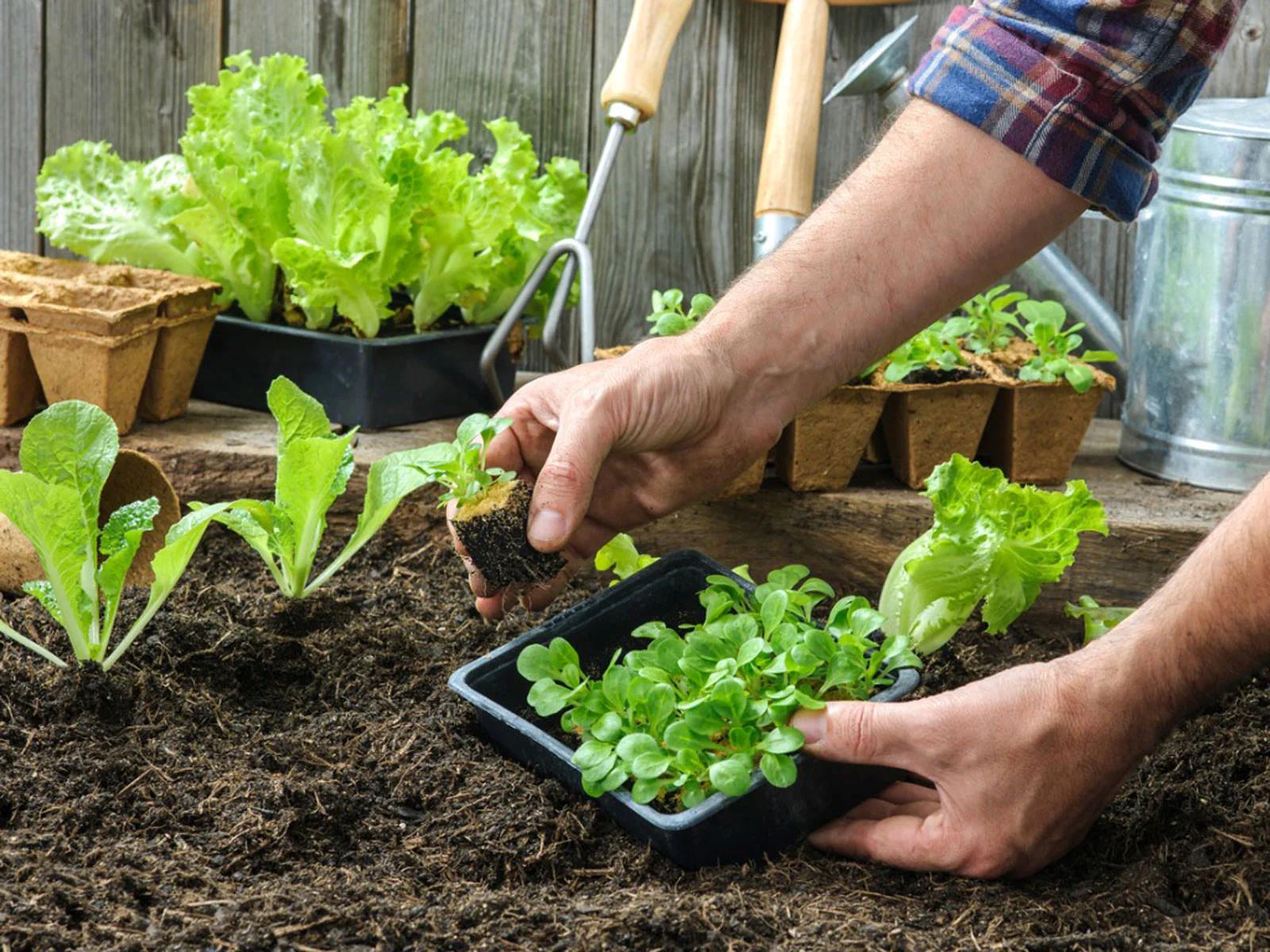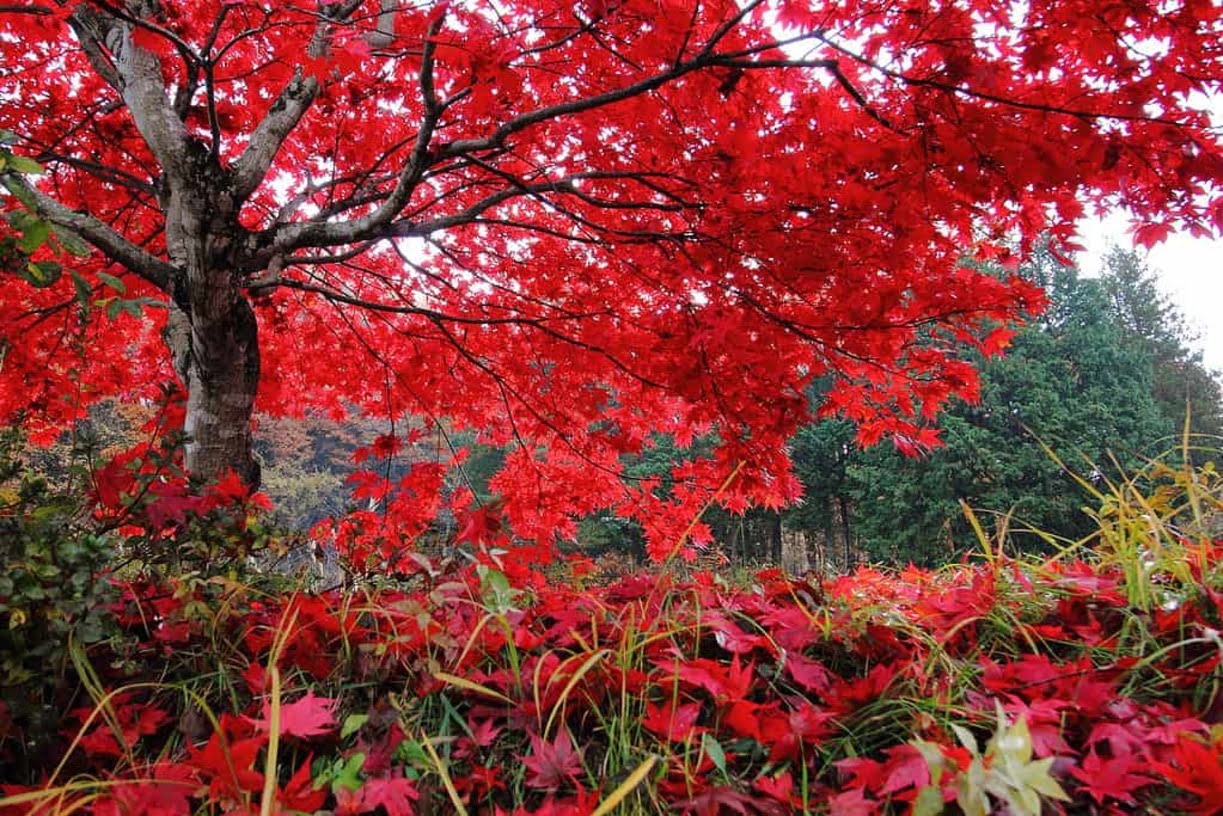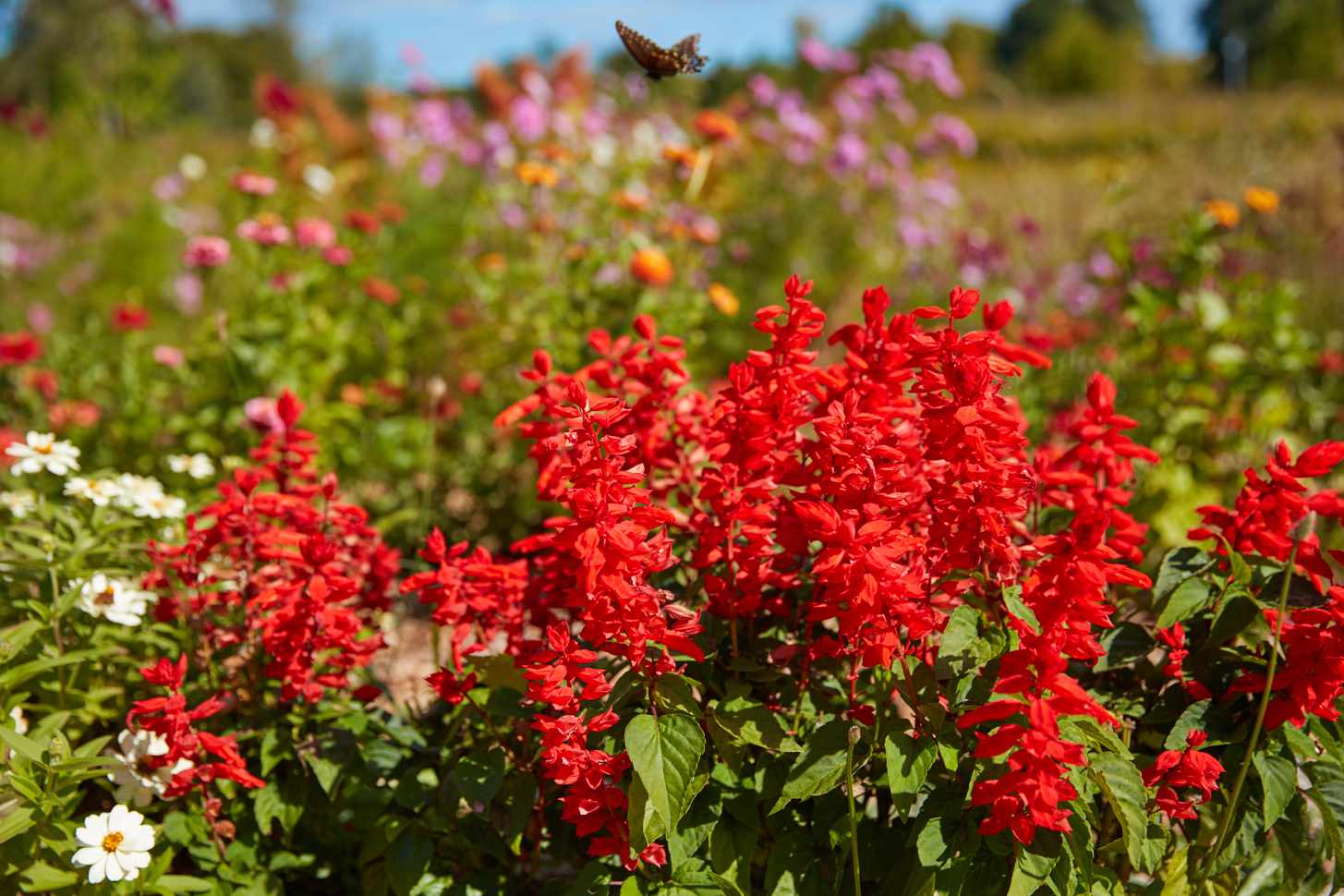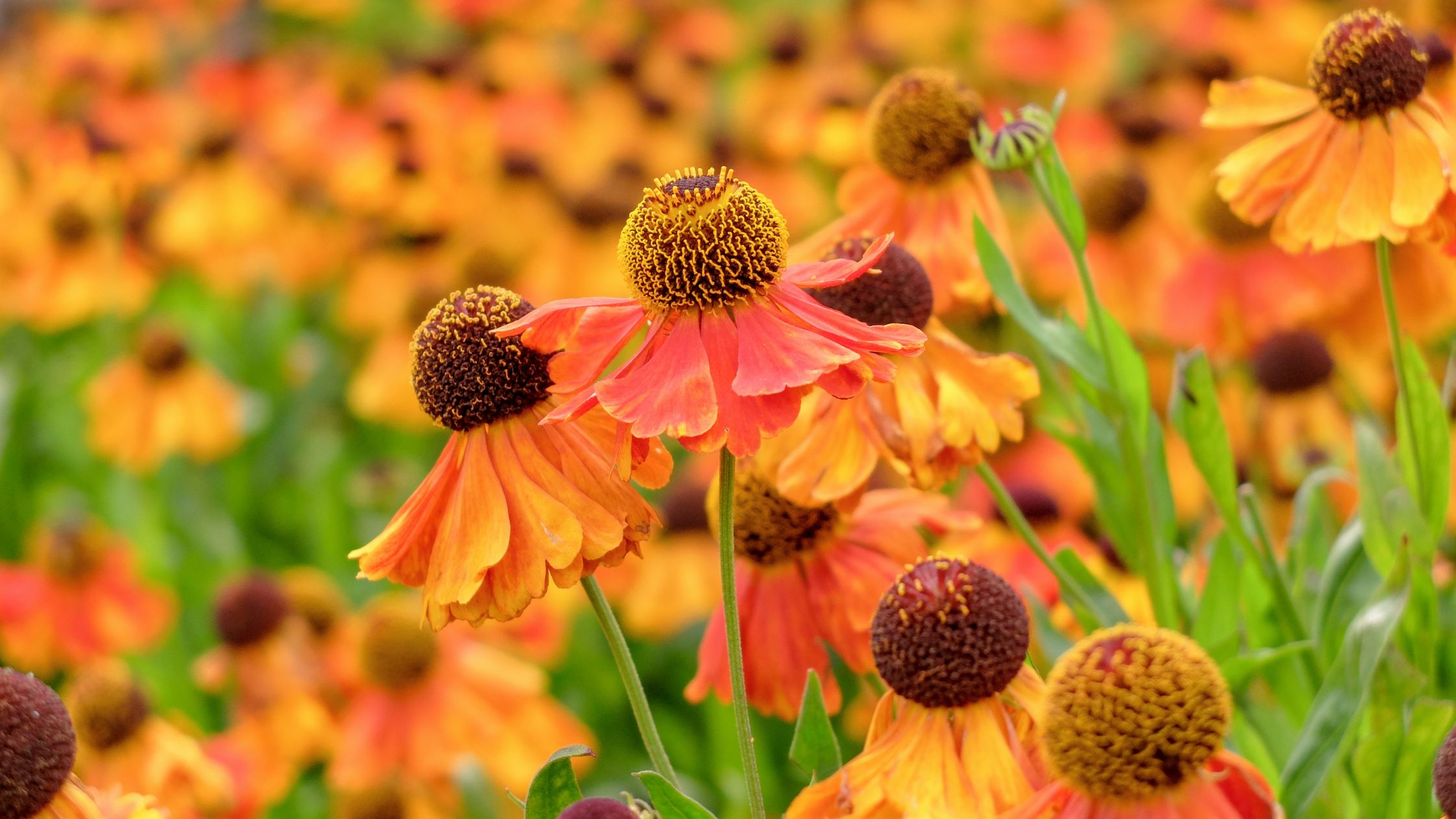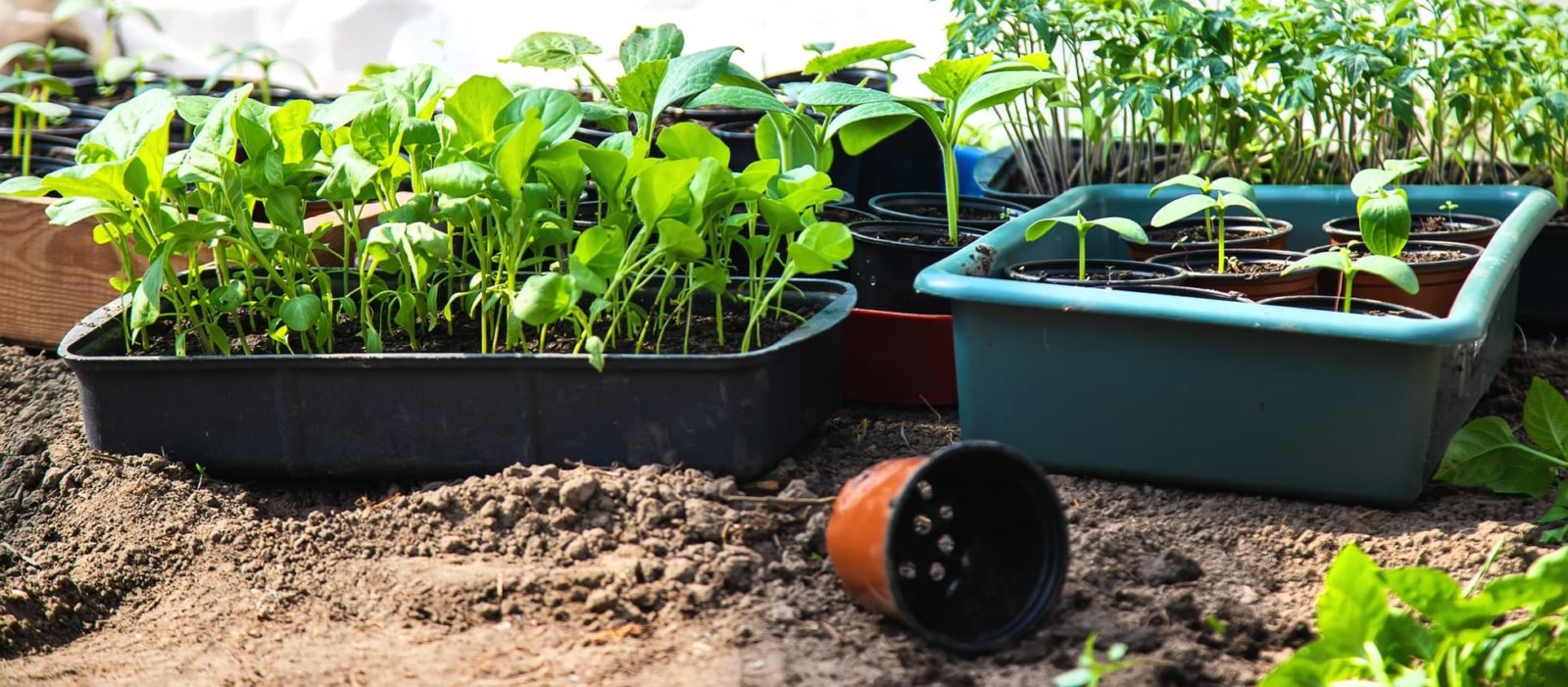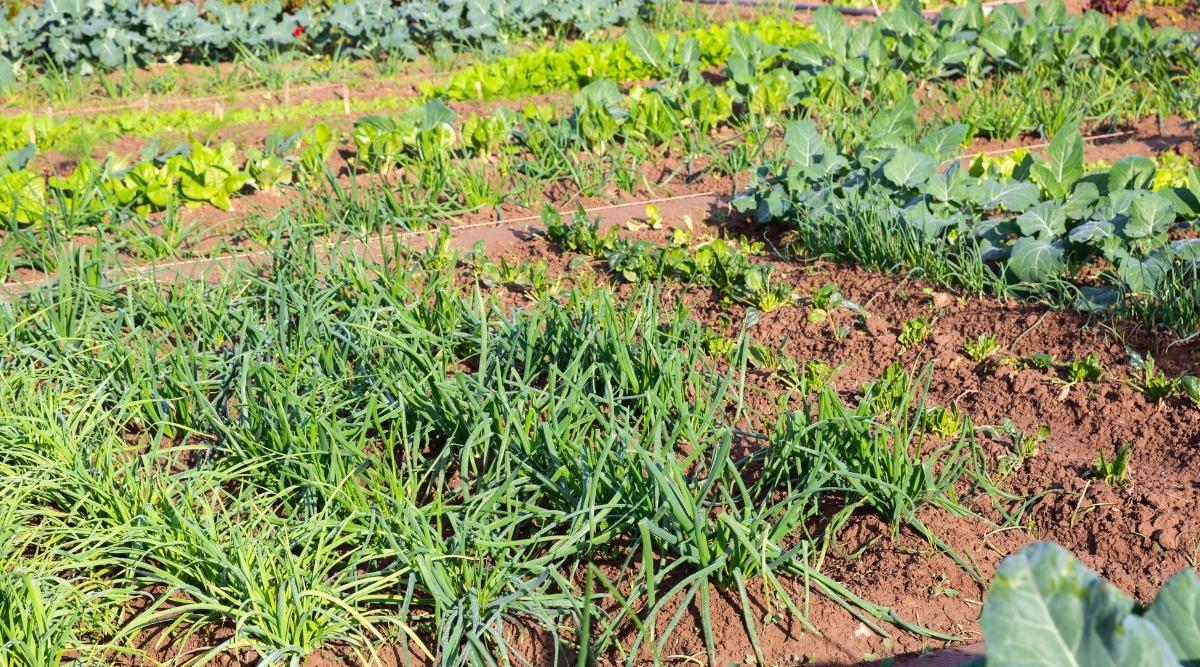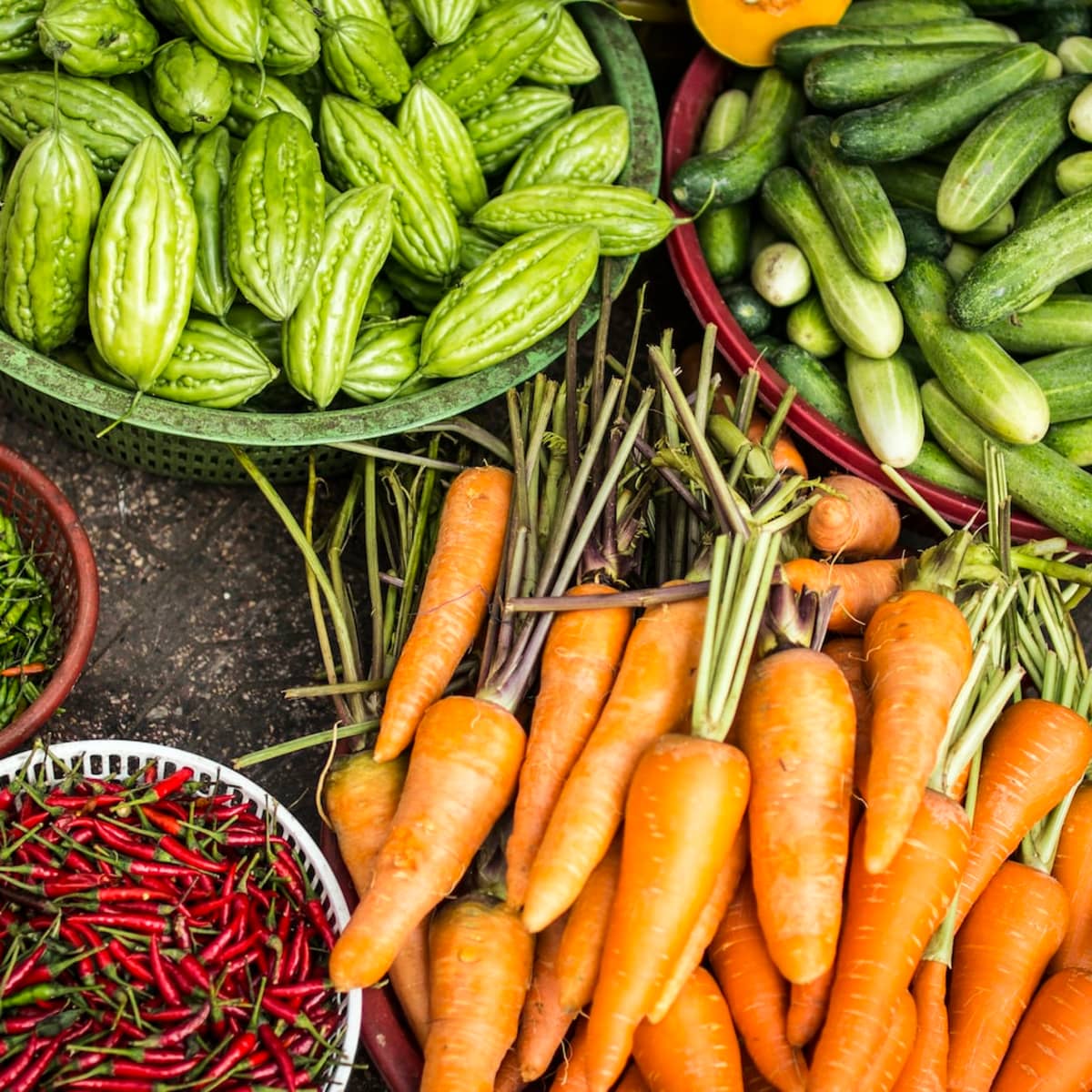Home>Gardening Techniques>Seasonal Gardening>What Vegetables To Plant In Fall


Seasonal Gardening
What Vegetables To Plant In Fall
Modified: January 22, 2024
Discover the best vegetables to plant during the fall season with our expert seasonal gardening tips. Maximize your harvest and enjoy fresh produce all autumn long.
(Many of the links in this article redirect to a specific reviewed product. Your purchase of these products through affiliate links helps to generate commission for Chicagolandgardening.com, at no extra cost. Learn more)
Table of Contents
Introduction
Fall is a magical time of year when the air turns crisp, the leaves change color, and nature prepares for the months ahead. But did you know that fall is also an excellent season for gardening? While most people associate gardening with the spring and summer months, the cooler temperatures and milder climate of fall create the perfect environment for growing a variety of vegetables.
Planting vegetables in the fall offers numerous benefits. It allows you to extend your growing season, providing fresh and nutritious produce long after summer has ended. Furthermore, fall vegetables tend to be more flavorful and disease-resistant, making them a delight to harvest and enjoy.
Before diving into fall gardening, it’s important to consider a few factors. First and foremost, it’s crucial to know your hardiness zone, which determines the average frost dates in your area. This information will guide you in selecting the ideal vegetables that can thrive and mature before the first frost hits.
Soil preparation is another key aspect to consider. Take the time to amend your soil with organic matter, such as compost or well-rotted manure, to enhance its fertility. Additionally, make sure your garden beds have proper drainage to prevent waterlogging, which can lead to root rot.
With the groundwork laid, it’s time to explore the exciting world of fall vegetables. In this article, we will highlight some of the best vegetables to plant in the fall, divided into various categories based on their growing habits and nutritional benefits. Whether you have a large backyard garden or a small urban plot, there are options for every skill level and space available.
Benefits of Planting Vegetables in Fall
Planting vegetables in the fall brings a host of advantages for both gardeners and their produce. Let’s explore some of the key benefits:
- Extended Harvest Season: By planting vegetables in the fall, you can enjoy a longer harvest season. While summer crops are winding down, fall vegetables continue to thrive, allowing you to savor fresh produce well into autumn.
- Enhanced Flavor and Nutrients: Cool weather enhances the flavor of many vegetables, making them even more delicious. Additionally, some research suggests that certain fall crops, such as kale and Brussels sprouts, may contain higher levels of antioxidants and vitamins due to exposure to mild frost.
- Protection from Pests and Diseases: Fall gardening can help reduce the risk of pest infestations and diseases that are more prevalent during the warmer months. Many harmful insects and pathogens decrease in numbers or become less active as temperatures drop, giving your plants a better chance of thriving.
- Fewer Weeds: Fall plantings often face less weed pressure, allowing your vegetable crops to have a better chance of growth and minimizing competition for nutrients. A well-mulched garden bed can further suppress weed growth and keep your vegetables healthy.
- Cooler and More Pleasant Gardening Conditions: Fall offers a respite from the scorching heat of summer, creating a more enjoyable environment for gardening. You can spend more time outside tending to your crops without the discomfort of extreme temperatures.
- Opportunity to Experiment with Unique Varieties: Fall gardening provides an opportunity to try unique vegetable varieties that may not be suitable for the heat of summer. Some vegetables, like certain types of lettuce and radishes, mature rapidly in cooler temperatures, allowing you to experience a wider variety of flavors and textures.
- Sustainable Gardening Practices: By planting in the fall, you can make the most of your garden space and resources. Utilizing the same plot for multiple seasons reduces soil erosion and wastage, making your gardening practices more sustainable.
With these myriad benefits, it’s clear that fall gardening is a rewarding endeavor for both seasoned gardeners and beginners alike. Not only does it offer a chance to extend the growing season, but it also provides an opportunity to enjoy fresh, flavorful, and nutrient-rich vegetables throughout the cooler months.
Factors to Consider Before Planting
Before embarking on your fall vegetable gardening journey, there are several factors you should take into account. These considerations will help ensure successful growth and yield. Let’s explore them in detail:
- Frost Dates: Understanding the average frost dates in your area is crucial for planning your fall vegetable garden. Different vegetables have varying tolerances to cooler temperatures. You need to know how much time you have before the first frost to ensure your crops have enough time to mature.
- Hardiness Zone: Identify your hardiness zone to determine the most suitable vegetables for your specific climate. Each zone has specific temperature ranges and growing conditions that affect plant growth. Consult a hardiness zone map to learn which vegetables have the best chance of thriving in your area.
- Garden Preparation: Prepare your garden beds by removing any weeds, rocks, or debris. It’s essential to cultivate the soil and incorporate organic matter like compost or aged manure to improve soil structure and fertility. This will provide the necessary nutrients for your fall vegetables to establish strong roots and grow vigorously.
- Watering and Drainage: Adequate watering is crucial for the success of any garden. Before planting, ensure your garden beds have proper drainage to prevent waterlogging, which can lead to root rot. Install drip irrigation or soaker hoses to deliver water directly to the plants’ roots, minimizing water waste and reducing the risk of fungal diseases.
- Companion Planting: Consider companion planting to maximize your garden’s potential. Some plants have synergistic effects when grown together. For example, planting aromatic herbs like rosemary or basil alongside vegetables can help deter pests. Do your research on suitable companion plants to optimize the health and productivity of your fall garden.
- Pest and Disease Control: Take preventative measures to protect your fall vegetables from common pests and diseases. Regularly inspect your plants for signs of infestation, such as chewed leaves or yellowing foliage. Consider natural pest control methods like companion planting, manual removal, or organic insecticides to keep damaging insects at bay.
- Succession Planting: Plan for successive plantings to extend your harvest season. As you harvest one crop, replant the space with another suitable vegetable that will mature before the first frost. This way, you can maximize your garden’s productivity and enjoy a continuous supply of fresh vegetables throughout the fall.
By considering these key factors before planting, you can set yourself up for a successful fall vegetable garden. Take the time to plan and prepare, ensuring that your garden is ready to nurture and support the growth of your vegetables. With careful attention and proper planning, your fall garden will thrive and provide a bountiful harvest.
Recommended Vegetables for Fall Planting
Fall is a wonderful season for planting and growing a wide range of vegetables. The cooler temperatures and milder climate create optimal conditions for certain crops to thrive. Here are some of the best vegetables to consider for your fall garden:
Leafy Greens:
Leafy greens such as spinach, lettuce, kale, and Swiss chard are excellent choices for fall planting. They are packed with nutrients and can withstand cooler temperatures. These greens can be harvested as baby leaves or allowed to grow to full size, providing you with a fresh and nutritious addition to your meals.
Root Vegetables:
Root vegetables like carrots, beets, turnips, and radishes are well-suited for fall planting. They benefit from the cooler weather, resulting in sweeter flavors and crisp textures. Make sure to choose varieties with shorter maturity times to ensure they can be harvested before the first frost.
Cruciferous Vegetables:
The fall season is ideal for growing cruciferous vegetables such as broccoli, cauliflower, and Brussels sprouts. These cold-hardy crops thrive in cool temperatures and develop better flavor after exposure to light frost. Plant them early enough to allow sufficient time for maturity before the colder winter months.
Alliums:
Alliums, including onions, garlic, and shallots, can be planted in the fall for a hearty and flavorful harvest next year. Fall planting allows these bulbs to establish roots throughout the winter, resulting in larger and more robust plants when spring arrives. Ensure well-drained soil and provide adequate spacing for bulb growth.
Legumes:
Legumes, such as peas and beans, can be sown in the fall as well. While they may not reach full maturity before winter, the plants will establish strong root systems, enabling them to flourish and produce an early harvest the following spring. Make sure to choose cold-tolerant varieties for best results.
Herbs:
Fall is also an excellent time to plant herbs such as parsley, cilantro, dill, and chives. These herbs can withstand the cooler temperatures and add fresh flavors to your dishes. By planting them in the fall, you can enjoy a continuous supply of herbs until the first hard frost.
When selecting vegetables for your fall garden, consider factors such as your hardiness zone, frost dates, and the specific requirements of each plant. Read the seed packets or plant labels for guidance on optimal planting times, spacing, and care instructions. With proper planning and a range of complementary vegetables, you can create a diverse and abundant fall garden that will keep your kitchen stocked with delicious and nutritious produce.
Leafy Greens
Leafy greens are a staple in any fall garden. These nutrient-rich vegetables not only thrive in cooler temperatures but also provide a burst of freshness and vibrant colors to your meals. Here are some popular leafy greens to consider planting in your fall garden:
Spinach:
Spinach is a versatile and highly nutritious green, rich in vitamins A, C, and K, as well as minerals like iron and calcium. It can be grown from seed or transplants and tolerates a range of growing conditions. Sow spinach in early fall, giving it enough time to establish before colder weather sets in. Harvest young leaves for tender salads or allow the plants to grow for larger, mature leaves to add to cooked dishes.
Lettuce:
Lettuce is a quick-growing leafy green that comes in various types, including crisphead, butterhead, romaine, and loose-leaf. Fall varieties of lettuce are known for their cold tolerance and ability to withstand light frosts. Sow seeds directly into the garden or transplant seedlings, ensuring proper spacing for optimal growth. Harvest lettuce leaves as needed for fresh salads or leave the plants to mature for harvesting whole heads.
Kale:
Kale is a nutritional powerhouse, packed with vitamins, minerals, and antioxidants. Its sturdy leaves are more cold-tolerant than many other leafy greens, making it an excellent choice for fall planting. There are several varieties of kale, including curly kale and Tuscan (or dinosaur) kale. Sow seeds or transplant seedlings in early fall and continue harvesting the outer leaves as the plant grows, allowing the inner leaves to continue to develop.
Swiss Chard:
Swiss chard is a beautiful leafy green with colorful stems and dark green or vibrant red leaves. It is rich in vitamins A, C, and K, as well as iron and magnesium. Swiss chard can be sown directly in the garden or started from transplants. It is a cold-hardy vegetable that can withstand frost, allowing you to continue harvesting well into late fall. Harvest the outer leaves, leaving the central ones to provide a continuous supply of fresh chard.
When planting leafy greens in your fall garden, pay attention to soil preparation and moisture levels. These vegetables prefer well-drained soil rich in organic matter. Adequate irrigation is essential to support their growth, especially during drier periods. Additionally, consider using row covers or garden fabric to protect the plants from pests and extend the growing season.
Leafy greens not only offer incredible nutritional value but also add texture, flavor, and visual appeal to your meals. With their abundance of colors and flavors, leafy greens are an essential component of a vibrant fall garden. Whether enjoyed in fresh salads, sautéed as a side dish, or added to soups and stews, fall-grown leafy greens will provide a delightful and healthy addition to your culinary adventures.
Root Vegetables
Root vegetables are a fantastic addition to your fall garden. These hearty and flavorful crops thrive in cooler temperatures, making them an excellent choice for autumn planting. From crispy carrots to earthy beets, here are some popular root vegetables to consider:
Carrots:
Carrots are a classic root vegetable known for their vibrant colors and sweet, crunchy taste. They come in various shapes, sizes, and colors, from traditional orange to purple, yellow, and white varieties. Sow carrot seeds directly into well-prepared soil in late summer or early fall, ensuring loose, rock-free soil for proper root development. Thin the seedlings to provide sufficient spacing, and water regularly to promote even growth. Harvest when the carrots have reached the desired size, usually around 60-80 days after planting.
Beets:
Beets are another versatile and nutritious root vegetable, cherished for their deep colors and earthy flavors. They can be roasted, pickled, or added to salads and soups. Sow beet seeds directly into the ground in late summer or early fall, allowing enough time for them to mature before the first frost. Beets prefer well-drained soil and regular watering to keep them tender and sweet. Harvest the roots when they reach the desired size, usually around 50-70 days after planting.
Turnips:
Turnips are a fast-growing root vegetable with a mild, slightly pungent flavor. They come in various shapes, sizes, and colors, with the “Purple Top” variety being particularly popular. Sow turnip seeds directly into the garden bed in late summer or early fall, ensuring proper spacing for root development. Turnips thrive in cool weather and require consistent moisture for tender roots. Harvest young turnips when they reach the size of a golf ball, or leave them to mature for larger turnips with a stronger flavor.
Radishes:
Radishes are quick-growing root vegetables with a distinct peppery flavor. They are a popular choice for fall planting due to their ability to tolerate cooler temperatures. Sow radish seeds directly into the soil in late summer or early fall, allowing enough time for them to mature before the first frost. Radishes prefer well-drained soil and regular moisture to prevent them from becoming woody. Harvest when the roots are crisp and mature, usually around 20-30 days after planting.
Root vegetables require soil with good drainage and benefit from the addition of organic matter, such as compost or well-rotted manure, to improve soil fertility. Regular watering is essential for proper root formation, but avoid overwatering, as it can lead to rot. Additionally, consider thinning the seedlings to provide adequate space for the roots to grow and develop properly.
With their earthy flavors and rich textures, root vegetables add depth and warmth to your fall dishes. Whether roasted, mashed, or used in vibrant salads, these versatile vegetables are a delightful addition to any autumn harvest. So, get your garden ready and enjoy the satisfaction of harvesting your own colorful and delicious root vegetables.
Cruciferous Vegetables
Cruciferous vegetables are a group of nutritious plants known for their unique taste and health benefits. These cold-hardy vegetables thrive in the cooler temperatures of the fall season, making them a perfect addition to your autumn garden. Here are some popular cruciferous vegetables to consider planting:
Broccoli:
Broccoli is a versatile and highly nutritious vegetable that is rich in vitamins A, C, and K, as well as fiber and various antioxidants. It forms compact heads composed of small, tightly packed florets. Start broccoli seeds indoors during the summer, or plant transplants in late summer for a fall crop. Ensure the plants have enough space to grow and provide consistent moisture. Harvest the central head when it reaches its full size, and continue harvesting side shoots for an extended harvest period.
Cauliflower:
Cauliflower is another popular cruciferous vegetable that thrives in cool temperatures. It is known for its dense, white curds, though there are also purple, orange, and green varieties available. Like broccoli, start cauliflower seeds indoors or plant transplants in late summer for a fall harvest. Blanch the heads by tying the outer leaves together to shield them from sunlight, resulting in a milder flavor and a creamier texture. Harvest the heads when they are firm and compact.
Brussels Sprouts:
Brussels sprouts are small, cabbage-like vegetables that grow along tall stalks. They have a slightly bitter, nutty flavor and are an excellent source of vitamins C and K. Start Brussels sprouts from transplants in mid- to late summer for a fall and winter harvest. As the weather cools, the sprouts develop a sweeter taste. Harvest the sprouts from the bottom of the stalk upward as they reach a firm texture and are about 1-2 inches in diameter.
Cabbage:
Cabbage is a versatile cruciferous vegetable that comes in various shapes and colors, including green, red, and savoy. It is packed with vitamins C and K, as well as dietary fiber. Start cabbage seeds indoors during the summer or plant transplants in late summer for a fall crop. Cabbages prefer fertile, well-drained soil and regular watering. Harvest the heads when they are firm and solid, cutting them at the base of the stalk.
When planting cruciferous vegetables, provide them with consistent moisture and ensure they have adequate space to grow. These crops benefit from regular feeding with organic fertilizer to ensure healthy growth. Additionally, be mindful of pests such as aphids, caterpillars, and cabbage worms, which can be managed through organic pest control methods like handpicking or using insecticidal soap.
With their unique flavors and nutritional value, cruciferous vegetables are a fantastic addition to your fall garden. Whether you enjoy them steamed, roasted, stir-fried, or in soups and stews, these vegetables offer a range of culinary possibilities. So, roll up your sleeves, plant some cruciferous crops, and look forward to a bountiful harvest of flavorful and nutrient-packed vegetables.
Alliums
Alliums are a diverse group of bulbous plants that add a distinct flavor and aroma to a variety of culinary dishes. These pungent and flavorful vegetables, including onions, garlic, and shallots, can be planted in the fall for a hearty harvest the following year. Here are some popular alliums to consider for your fall garden:
Onions:
Onions are a staple in many kitchens and come in a range of sizes, flavors, and colors. Plant onion sets or seedlings in the fall, providing them with well-drained soil and full sun. Onions prefer cool temperatures during their early growth stages, making them a perfect fit for autumn planting. Harvest the bulbs when the tops start to yellow and fall over. Allow them to dry in a well-ventilated area before storing for future use.
Garlic:
Garlic is a popular allium known for its strong and distinctive flavor. Autumn is the best time to plant garlic, as the bulbs require a period of cold to stimulate bulb development. Separate the garlic cloves and plant them pointed end up, with about an inch of soil covering the top. Ensure the soil is well-drained and enriched with organic matter. Harvest garlic when the foliage starts to turn yellow and dry out. Cure the bulbs in a shady, well-ventilated area before storing for long-term use.
Shallots:
Shallots are a versatile allium with a milder, sweeter flavor compared to onions and garlic. They have a unique bulb structure with multiple cloves. Plant shallot sets or seedlings in the fall, providing well-drained soil and full sun. Space them adequately to allow room for bulb expansion. Harvest shallots when the foliage starts to turn yellow and dry. Cure them in a warm, dry place with good air circulation before storing.
Alliums are relatively low-maintenance crops that require well-prepared soil with good drainage. They benefit from regular watering, especially during dry spells, but be cautious not to overwater as excessive moisture can lead to rot. Mulching around the plants can help conserve moisture and suppress weed growth.
These flavorful alliums are not only culinary delights but also have several health benefits. They contain sulfur compounds that contribute to their distinct taste and have antimicrobial and antioxidant properties. Incorporating alliums into your fall garden will not only provide you with a bountiful harvest but also enhance the flavor of your dishes and promote your overall well-being.
Legumes
Legumes, a family of flowering plants, are not only a delicious addition to meals but also offer numerous benefits to your fall garden. These nitrogen-fixing crops improve soil fertility, making them ideal for rotation or intercropping with other vegetables. Here are some legumes to consider planting in your fall garden:
Peas:
Peas are cool-season legumes and one of the first crops you can plant in the fall. With their delicate flavor and delightful crunch, they are a favorite for many gardeners. Both shelling peas and edible-podded varieties, like snow peas and snap peas, can be grown in the fall. Sow pea seeds directly into well-prepared soil, providing support like trellises or stakes for the vines to climb. Harvest peas when the pods are plump, but before they become overly mature and starchy.
Beans:
Beans, such as bush beans and pole beans, are an excellent choice for fall planting. They not only provide tasty pods but also contribute to soil fertility by fixing nitrogen. Choose bush beans if you have limited space, as they grow in compact bushes. Pole beans, on the other hand, require trellises or other supports to climb. Sow bean seeds directly into the soil, ensuring proper spacing. Harvest the pods when they are young and tender, before the seeds inside become too mature.
Lentils:
Lentils are highly nutritious legumes that add a protein-rich element to your meals. They come in various colors, including black, green, brown, and red. Lentils prefer well-drained soil and thrive in cooler temperatures. Sow lentil seeds directly into the ground, ensuring loose soil and proper spacing. Lentils can be harvested when the pods have turned brown and dry. Thresh the dried plants to separate the seeds from the pods.
Chickpeas:
Chickpeas, also known as garbanzo beans, are versatile legumes with a nutty flavor and creamy texture. They are a staple in many cuisines and can be used in a variety of dishes, such as hummus, stews, and salads. Chickpeas prefer well-drained soil and full sun. Sow chickpea seeds directly into the ground, ensuring proper spacing. Harvest the pods when they have dried on the plant. Thresh the plants to separate the seeds from the pods and store them for later use.
Legumes are relatively low-maintenance crops that benefit your garden ecosystem. Their ability to fix nitrogen enriches the soil, making it more fertile for subsequent plantings. Additionally, legumes help suppress weeds and improve overall soil structure. Be sure to practice proper crop rotation to maximize their benefits and reduce the risk of disease or pests.
Embrace legumes in your fall garden not only for their culinary value but also for their contribution to sustainable gardening practices. With their ability to improve soil health and enrich your meals, legume crops are an excellent choice for a productive and eco-friendly autumn garden.
Herbs
Herbs are versatile and aromatic plants that can elevate the flavors of your culinary creations. Fall is a perfect time to plant herbs, as the cooler temperatures enhance their flavors. Whether you have a dedicated herb garden or simply want to include them in your existing vegetable bed, here are some popular herbs to consider for your fall garden:
Parsley:
Parsley is a versatile herb that adds freshness and color to dishes. It comes in two main varieties: curly leaf and flat-leaf (Italian) parsley. Plant parsley from seeds or transplants in the fall, ensuring well-drained soil. Harvest the outer leaves as needed, allowing the center of the plant to continue growing and regenerating foliage.
Cilantro:
Cilantro, also known as coriander, is a herb with a distinctive flavor and aroma. It provides a citrusy and fresh taste to many dishes, particularly in Mexican, Indian, and Asian cuisines. Cilantro can be sown directly in the ground in the fall. Harvest the leaves when they are young and tender, before they begin to bolt and produce seeds (known as coriander).
Dill:
Dill is an herb with feathery leaves and a unique flavor that pairs well with seafood, pickles, and salads. Sow dill seeds directly into the garden bed in the fall, providing well-drained soil. Harvest the leaves and seeds as needed. Dill leaves have a milder flavor when harvested young, while the seeds are aromatic and commonly used in pickling.
Chives:
Chives are a member of the onion family and deliver a mild onion flavor to dishes. They are easy to grow, making them a perfect addition to your fall garden. Plant chive seeds or transplants in well-drained soil, providing them with full sun. Harvest the leaves by cutting them close to the base, allowing new shoots to regrow.
Other herbs that can be planted in the fall include thyme, rosemary, sage, and mint. These herbs provide various flavors and can be grown in containers or in the ground. Be sure to provide them with well-drained soil, sufficient sunlight, and proper spacing for optimal growth.
Herbs need regular watering, especially during dry spells, but be careful not to overwater, as excessive moisture can lead to root rot. Harvesting herbs often promotes bushier growth, so feel free to snip leaves as needed throughout the season.
Adding herbs to your fall garden not only enhances the flavors of your dishes but also offers you the pleasure of growing and harvesting fresh ingredients. Their aromatic presence enriches the garden and brings joy to the senses. So, embrace the world of herbs in your fall garden and elevate your culinary creations with their delightful flavors.
Conclusion
Fall gardening offers a unique opportunity to extend the growing season and enjoy a bounty of fresh vegetables. By carefully selecting the right vegetables for your region and giving them the proper care, you can create a thriving fall garden that will provide you with nourishing and delicious produce.
Planting vegetables in the fall brings a range of benefits. It allows for an extended harvest season, enhanced flavors, and protection from pests and diseases. With a little planning and preparation, you can maximize your garden’s productivity and sustainability.
When considering vegetables for fall planting, leafy greens like spinach, lettuce, and kale offer nutritional value and vibrant colors to your meals. Root vegetables such as carrots, beets, and radishes provide earthy flavors and crisp textures. Cruciferous vegetables like broccoli, cauliflower, and Brussels sprouts thrive in cooler temperatures and offer health benefits. Alliums like onions, garlic, and shallots add distinctive flavors to dishes and can be planted in the fall for a harvest the following year. Legumes such as peas, beans, lentils, and chickpeas not only contribute to soil fertility but also provide protein-rich options. Herbs like parsley, cilantro, dill, and chives add freshness and aroma to your culinary creations.
As you embark on your fall gardening journey, consider factors such as frost dates, hardiness zones, soil preparation, proper spacing, water management, and pest control. By paying attention to these essential elements, you can set yourself up for success and a fruitful harvest.
So, roll up your sleeves, dig into the soil, and embrace the joys of fall gardening. Let the crisp air and golden foliage inspire you as you nurture and cultivate your autumn oasis. Your bountiful harvest will not only reward your taste buds but also bring a sense of satisfaction and accomplishment. Happy gardening!

